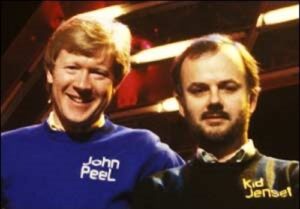 The origin of the BBC radio session came about due to restrictions imposed on the corporation by the Musicians Union and Phonographic Performance Limited with regards the airing of recorded music.
The origin of the BBC radio session came about due to restrictions imposed on the corporation by the Musicians Union and Phonographic Performance Limited with regards the airing of recorded music.
The thinking behind this was to create employment, as well as force people to buy records and not listen to them free of charge on the air. As a result, the BBC had to hire bands and orchestras to perform cover versions of recorded music to make up for the shortfall.
When the policy evolved with the advent of the more pop and rock oriented station Radio1, bands ventured into BBC’s Maida Vale studios to lay down between 3 to 5 tracks, with in-house personnel such as John Walters, Dale Griffin, Jeff Griffin, Chris Lycett, Mike Robinson, John Owen Williams and (not that) Tony Wilson helming the sessions.
The most celebrated of these BBC sessions were recorded for John Peel, but equally of merit and perhaps more of an indicator to potential breakthroughs into the mainstream were those produced for Richard Skinner and Kid Jensen.
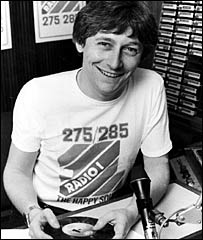 Sessions were usually recorded and mixed in a single day, so had a rougher feel that lay somewhere between a live performance and a studio recording, sounding almost like a polished demo.
Sessions were usually recorded and mixed in a single day, so had a rougher feel that lay somewhere between a live performance and a studio recording, sounding almost like a polished demo.
While acts would often use the opportunity to promote their latest single or album, others would premiere recently written compositions, try out different arrangements on established songs or perform cover versions. A number of these session recordings were even superior to their eventual officially released versions.
So ELECTRICITYCLUB.CO.UK presents its favourite 25 BBC Radio1 session tracks with other selection criteria including rare songs or tracks capturing the zeitgeist and signalling a change in the course of music. Presented in chronological and then alphabetical order within each year with a restriction of one track per artist moniker, here are some special moments from our beloved Auntie Beeb.
THE HUMAN LEAGUE Blind Youth (John Peel 1978)
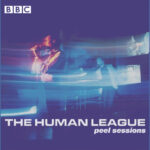 In Summer 1978, THE HUMAN LEAGUE perhaps surprisingly recorded their only session for the BBC which included ‘Being Boiled’, ‘No Time’ (which became ‘The Word Before Last’), a cover of ‘You’ve Lost That Lovin’ Feeling’ and ‘Blind Youth’. The latter was the frantic percussive highlight of the four, a wonderfully shambolic slice of synth punk with bum bleeps and avant waves of white noise, all held together by the metallic rhythmic bed of a sequenced Roland System 100.
In Summer 1978, THE HUMAN LEAGUE perhaps surprisingly recorded their only session for the BBC which included ‘Being Boiled’, ‘No Time’ (which became ‘The Word Before Last’), a cover of ‘You’ve Lost That Lovin’ Feeling’ and ‘Blind Youth’. The latter was the frantic percussive highlight of the four, a wonderfully shambolic slice of synth punk with bum bleeps and avant waves of white noise, all held together by the metallic rhythmic bed of a sequenced Roland System 100.
Not officially released
http://www.thehumanleague.co.uk/
TUBEWAY ARMY I Nearly Married A Human (John Peel 1979)
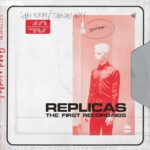 Although only comprising of three tracks, Gary Numan’s session as TUBEWAY ARMY for John Peel in early 1979 captured an artist in transition. From the comparatively punky ‘Me! I Disconnect From You’ to the dystopian synthpop of ‘Down In The Park’, the electronics were gaining more prominence to suit his increasingly unsettling lyrical themes. And on the mostly instrumental ‘I Nearly Married A Human’, the machines launched a coup d’etat and took over like an army of replicants with the murmurs of the title being the only sign of flesh and blood.
Although only comprising of three tracks, Gary Numan’s session as TUBEWAY ARMY for John Peel in early 1979 captured an artist in transition. From the comparatively punky ‘Me! I Disconnect From You’ to the dystopian synthpop of ‘Down In The Park’, the electronics were gaining more prominence to suit his increasingly unsettling lyrical themes. And on the mostly instrumental ‘I Nearly Married A Human’, the machines launched a coup d’etat and took over like an army of replicants with the murmurs of the title being the only sign of flesh and blood.
Available on the GARY NUMAN // TUBEWAY ARMY album ‘Replicas – The First Recordings’ via Beggars Banquet
via Beggars Banquet
http://garynuman.com/
OMD Pretending To See The Future (John Peel 1980)
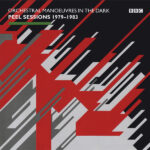 Several months after the release of their self-titled debut long player, OMD returned for their second of their four John Peel sessions with Paul Humphreys and Andy McCluskey accompanied by drummer Malcolm Holmes and keyboardist Dave Hughes. By now, their live sound had expanded and this change was captured on this session with the version of ‘Pretending To See The Future’ having more presence and a looser percussive edge compared with the underwhelming drum machine-led album version.
Several months after the release of their self-titled debut long player, OMD returned for their second of their four John Peel sessions with Paul Humphreys and Andy McCluskey accompanied by drummer Malcolm Holmes and keyboardist Dave Hughes. By now, their live sound had expanded and this change was captured on this session with the version of ‘Pretending To See The Future’ having more presence and a looser percussive edge compared with the underwhelming drum machine-led album version.
Available on the OMD album ‘Peel Sessions 1979-1983’ via Virgin Records
via Virgin Records
https://www.omd.uk.com/
B-MOVIE Polar Opposites (John Peel 1981)
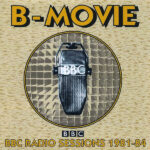 One of the bands alongside SOFT CELL, DEPECHE MODE and BLANCMANGE who got a profile boost from their inclusion on the ‘Some Bizzare Album’, although they were signed by Phonogram to take on DURAN DURAN, B-MOVIE had more of a psychedelic vibe as reflected by songs like ‘Welcome To The Shrink’ and ‘All Fall Down’ on their first John Peel session in March 1981. But the highlight was ‘Polar Opposites’ with its mighty ‘2001: A Space Odyssey’ synth line. It would have made a great single, but never properly was!
One of the bands alongside SOFT CELL, DEPECHE MODE and BLANCMANGE who got a profile boost from their inclusion on the ‘Some Bizzare Album’, although they were signed by Phonogram to take on DURAN DURAN, B-MOVIE had more of a psychedelic vibe as reflected by songs like ‘Welcome To The Shrink’ and ‘All Fall Down’ on their first John Peel session in March 1981. But the highlight was ‘Polar Opposites’ with its mighty ‘2001: A Space Odyssey’ synth line. It would have made a great single, but never properly was!
Available on the B-MOVIE album ‘BBC Radio Sessions 1981-1984’ via Cherry Red Records
via Cherry Red Records
http://www.b-movie.co.uk/
DEPECHE MODE Boys Say Go (Richard Skinner 1981)
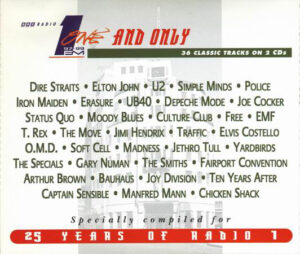 Broadcast in Summer 1981, this session captured the original DEPECHE MODE line-up of Dave Gahan, Martin Gore, Andy Fletcher and Vince Clarke several months before the release of debut album ‘Speak & Spell’. Refining into a pop band but still retaining much of the synthetic rawness that linked them artistically to acts like FAD GADGET, the session was characterised by use of the Korg Rhythm KR55 drum machine with its charming klanky metallics. This version of ‘Boys Say Go’ possessed an aggression that was lost on the eventual album cut.
Broadcast in Summer 1981, this session captured the original DEPECHE MODE line-up of Dave Gahan, Martin Gore, Andy Fletcher and Vince Clarke several months before the release of debut album ‘Speak & Spell’. Refining into a pop band but still retaining much of the synthetic rawness that linked them artistically to acts like FAD GADGET, the session was characterised by use of the Korg Rhythm KR55 drum machine with its charming klanky metallics. This version of ‘Boys Say Go’ possessed an aggression that was lost on the eventual album cut.
Available on the compilation album ‘1 & Only – 25 Years of BBC Radio 1’ (V/A) via BBC Enterprises / Band Of Joy
(V/A) via BBC Enterprises / Band Of Joy
http://www.depechemode.com/
DURAN DURAN Like An Angel (Peter Powell 1981)
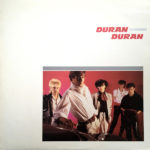 Like THE HUMAN LEAGUE, DURAN DURAN only did the one BBC session for their biggest champion Peter Powell. Broadcast in June 1981 to coincide with the release of their self-titled debut, they recorded near-facsimile versions of ‘Girls On Film’, ‘Anyone Out There’ and ‘Night Boat’. But a surprise came with ‘Like An Angel’, a sprightly love song unreleased at the time which pointed away from the New Romantics to the more mainstream pop ambition of the ‘Rio’ opus that was to come just a year later.
Like THE HUMAN LEAGUE, DURAN DURAN only did the one BBC session for their biggest champion Peter Powell. Broadcast in June 1981 to coincide with the release of their self-titled debut, they recorded near-facsimile versions of ‘Girls On Film’, ‘Anyone Out There’ and ‘Night Boat’. But a surprise came with ‘Like An Angel’, a sprightly love song unreleased at the time which pointed away from the New Romantics to the more mainstream pop ambition of the ‘Rio’ opus that was to come just a year later.
Available on the DURAN DURAN boxed set ‘Duran Duran’ via EMI Records
via EMI Records
http://www.duranduran.com
SOFT CELL Seedy Films (Richard Skinner 1981)
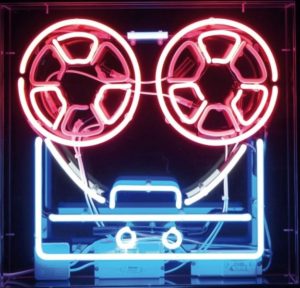 Contributing five songs to their first BBC session as ‘Tainted Love’ was rising up the UK chart, brilliant songs like ‘Bedsitter’, ‘Entertain Me’, ‘Chips On My Shoulder’ and ‘Youth’ demonstrated the potential of Marc Almond and Dave Ball, even in basic form. While ‘Seedy Films’ was faster paced and a bit “snap, crackle and pop” compared to the more sophisticated and laid-back clarinet-laden ‘Non-Stop Erotic Cabaret’ album version, it outlined why at the time, SOFT CELL were rated higher than DEPECHE MODE.
Contributing five songs to their first BBC session as ‘Tainted Love’ was rising up the UK chart, brilliant songs like ‘Bedsitter’, ‘Entertain Me’, ‘Chips On My Shoulder’ and ‘Youth’ demonstrated the potential of Marc Almond and Dave Ball, even in basic form. While ‘Seedy Films’ was faster paced and a bit “snap, crackle and pop” compared to the more sophisticated and laid-back clarinet-laden ‘Non-Stop Erotic Cabaret’ album version, it outlined why at the time, SOFT CELL were rated higher than DEPECHE MODE.
Available on the SOFT CELL boxed set ‘Keychains & Snowstorms’ via Universal Music
via Universal Music
https://www.softcell.co.uk/
SPANDAU BALLET Mandolin (Studio B15 1981)
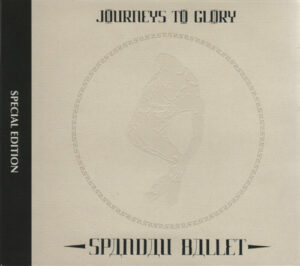 ‘Studio B15’ was a short-lived Sunday afternoon magazine show presented by the late Adrian Love that often invited their guests to perform live. SPANDAU BALLET had just released their debut album ‘Journeys To Glory’ and as a band that didn’t tour and rarely played live, this was an opportunity to demonstrate their abilities. ‘Mandolin’ featured a prominent Yamaha CS10 synth line while this version featured Simmons drums and a much clearer vocal with a more pronounced diction from Tony Hadley compared to the oddly smothered album version.
‘Studio B15’ was a short-lived Sunday afternoon magazine show presented by the late Adrian Love that often invited their guests to perform live. SPANDAU BALLET had just released their debut album ‘Journeys To Glory’ and as a band that didn’t tour and rarely played live, this was an opportunity to demonstrate their abilities. ‘Mandolin’ featured a prominent Yamaha CS10 synth line while this version featured Simmons drums and a much clearer vocal with a more pronounced diction from Tony Hadley compared to the oddly smothered album version.
Available on the SPANDAU BALLET deluxe album ‘Journeys to Glory’ via EMI Records
via EMI Records
http://www.spandauballet.com/
BLANCMANGE Running Thin (John Peel 1982)
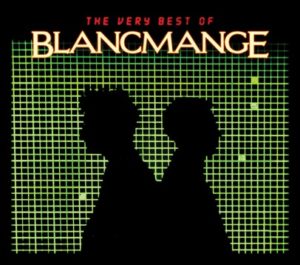 Aired in February 1982, BLANCMANGE were captured in their only John Peel session as a much darker proposition than was later perceived by their UK chart success. It included an early take on ‘Living On The Ceiling’ without its Indian embellishments but the session was notable for ‘I Would’ and ‘Running Thin’, two songs that would not make it onto the ‘Happily Families’ tracklisting. ‘Running Thin’ in particular saw Neil Arthur and Stephen Luscombe trapped in a stark state of gloomy resignation.
Aired in February 1982, BLANCMANGE were captured in their only John Peel session as a much darker proposition than was later perceived by their UK chart success. It included an early take on ‘Living On The Ceiling’ without its Indian embellishments but the session was notable for ‘I Would’ and ‘Running Thin’, two songs that would not make it onto the ‘Happily Families’ tracklisting. ‘Running Thin’ in particular saw Neil Arthur and Stephen Luscombe trapped in a stark state of gloomy resignation.
Available on the BLANCMANGE album ‘The Very Best Of’ via Demon Music
via Demon Music
http://www.blancmange.co.uk/
CHINA CRISIS This Occupation (John Peel 1982)
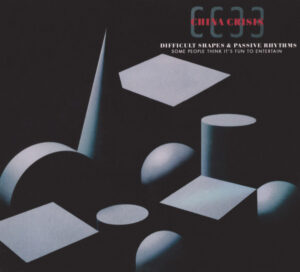 Recorded nearly six months before the release of their debut album, CHINA CRISIS’ first John Peel session saw the duo exploring territory that sat between electronic and traditional pop. ‘Seven Sports For All’ and ‘Some People I Know To Lead Fantastic Lives’ ended up on the album while the more moody ‘Be Suspicious’ was already a B-side. But this version of ‘This Occupation’ was pure machine-propelled synthpop complete with sequencing and strong lead lines; later recordings that appeared on the B-sides of ‘Wishful Thinking’ were never as good.
Recorded nearly six months before the release of their debut album, CHINA CRISIS’ first John Peel session saw the duo exploring territory that sat between electronic and traditional pop. ‘Seven Sports For All’ and ‘Some People I Know To Lead Fantastic Lives’ ended up on the album while the more moody ‘Be Suspicious’ was already a B-side. But this version of ‘This Occupation’ was pure machine-propelled synthpop complete with sequencing and strong lead lines; later recordings that appeared on the B-sides of ‘Wishful Thinking’ were never as good.
Available on the CHINA CRISIS deluxe album ‘Difficult Shapes & Passive Rhythms’ via Caroline Records
via Caroline Records
https://www.facebook.com/chinacrisisofficial
EURYTHMICS I’ve Got An Angel (Kid Jensen 1982)
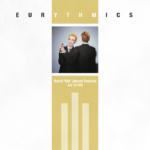 After their 1981 German-inspired debut ‘In The Garden’, Annie Lennox and David A Stewart explored the possibilities of the synthesizer and acquired a Movement Drum Computer to live up to their moniker. In a BBC session that also included ‘Love Is A Stranger’ which was soon to be issued as a single , ‘I’ve Got An Angel’ was an unusual hybrid of synths, electronic drums and wah-wah guitar, with flute by the front woman alongside her particularly intense and raw vocal. By comparison, the released version on the ‘Sweet Dreams (Are Made Of This)’ album was more restrained.
After their 1981 German-inspired debut ‘In The Garden’, Annie Lennox and David A Stewart explored the possibilities of the synthesizer and acquired a Movement Drum Computer to live up to their moniker. In a BBC session that also included ‘Love Is A Stranger’ which was soon to be issued as a single , ‘I’ve Got An Angel’ was an unusual hybrid of synths, electronic drums and wah-wah guitar, with flute by the front woman alongside her particularly intense and raw vocal. By comparison, the released version on the ‘Sweet Dreams (Are Made Of This)’ album was more restrained.
Not officially released
https://www.eurythmics.com/
NEW ORDER Too Late (John Peel 1982)
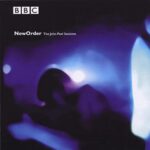 Not actually recorded at the BBC, NEW ORDER’s second self-produced John Peel session was a fascinating document of the Mancunian’s transitioning sound with the throbbing sequences of ‘586’ highlighting a future proto-dance direction. Meanwhile ‘Turn The Heater On’ was a cover of the Keith Hudson reggae song in tribute to Ian Curtis and ‘We All Stand’ had avant jazz overtones. But ‘Too Late’ was significant, sounding like it could have come off debut album ‘Movement’ with its lingering gothic doom but also remaining unreleased, discarded as if a relic from another era.
Not actually recorded at the BBC, NEW ORDER’s second self-produced John Peel session was a fascinating document of the Mancunian’s transitioning sound with the throbbing sequences of ‘586’ highlighting a future proto-dance direction. Meanwhile ‘Turn The Heater On’ was a cover of the Keith Hudson reggae song in tribute to Ian Curtis and ‘We All Stand’ had avant jazz overtones. But ‘Too Late’ was significant, sounding like it could have come off debut album ‘Movement’ with its lingering gothic doom but also remaining unreleased, discarded as if a relic from another era.
Available on the NEW ORDER boxed set ‘Power, Corruption & Lies’ via Rhino
via Rhino
http://www.neworder.com/
TEARS FOR FEARS Memories Fade (Kid Jensen 1982)
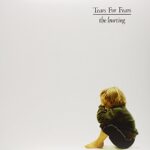 Featuring ‘The Prisoner’, ‘The Hurting’, ‘Start Of The Breakdown’ and ‘Memories Fade’, the arrangements for this BBC session aired after TEARS FOR FEARS’ success with ‘Mad World’ differed significantly from the versions on their debut album. Featuring Linn Drum programming and Banshees-like guitar instead of sax, this version of ‘Memories Fade’ was far superior, utilising a much more powerful mechanised rhythmic tension that reflected the fraught paranoia and resignation of Roland Orzabal’s lyrical angst.
Featuring ‘The Prisoner’, ‘The Hurting’, ‘Start Of The Breakdown’ and ‘Memories Fade’, the arrangements for this BBC session aired after TEARS FOR FEARS’ success with ‘Mad World’ differed significantly from the versions on their debut album. Featuring Linn Drum programming and Banshees-like guitar instead of sax, this version of ‘Memories Fade’ was far superior, utilising a much more powerful mechanised rhythmic tension that reflected the fraught paranoia and resignation of Roland Orzabal’s lyrical angst.
Available on the TEARS FOR FEARS boxed set ‘The Hurting’ via Mercury Records
via Mercury Records
https://tearsforfears.com/
YAZOO In My Room (Kid Jensen 1982)
 Reshaped with a Fairlight and Linn Drum Computer, this version of ‘In My Room’ recorded in session for Kid Jensen was far superior to the irritating album version on ‘Upstairs At Eric’s’. Forming the basis for the live interpretation, it was now free of Vince Clarke’s ‘Lord’s Prayer’ tape loop monologue and allowed Alison Moyet space to express her emotive frustration to reveal a fantastic song free of distractions. Other songs in the session included beefed up takes on ‘Bring Your Love Down (Didn’t I)’, ‘Situation’ and ‘Too Pieces’.
Reshaped with a Fairlight and Linn Drum Computer, this version of ‘In My Room’ recorded in session for Kid Jensen was far superior to the irritating album version on ‘Upstairs At Eric’s’. Forming the basis for the live interpretation, it was now free of Vince Clarke’s ‘Lord’s Prayer’ tape loop monologue and allowed Alison Moyet space to express her emotive frustration to reveal a fantastic song free of distractions. Other songs in the session included beefed up takes on ‘Bring Your Love Down (Didn’t I)’, ‘Situation’ and ‘Too Pieces’.
Available on the YAZOO boxed set ‘Three Pieces’ via Mute Records
via Mute Records
http://yazooinfo.com/
DEAD OR ALIVE Give It To Me (Kid Jensen 1983)
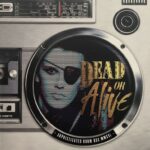 Co-written with Wayne Hussey, ‘Give It To Me’ was Pete Burns at his filthy lyrical best, declaring that “Apart from all your obvious attractions, I’ve got the bullets, you’ve got the gun, bang me into action, let’s make this obvious distraction, physically you are just what I wanted!”. Although this slice of Middle Eastern favoured HI-NRG later surfaced as a bonus track on the 12 inch single of ‘I’d Do Anything’, it seems almost unbelievable now that this potential hit single was never developed further in the studio.
Co-written with Wayne Hussey, ‘Give It To Me’ was Pete Burns at his filthy lyrical best, declaring that “Apart from all your obvious attractions, I’ve got the bullets, you’ve got the gun, bang me into action, let’s make this obvious distraction, physically you are just what I wanted!”. Although this slice of Middle Eastern favoured HI-NRG later surfaced as a bonus track on the 12 inch single of ‘I’d Do Anything’, it seems almost unbelievable now that this potential hit single was never developed further in the studio.
Available on the DEAD OR ALIVE boxed set ‘Sophisticated Boom Box MMXVI’ via Edsel Records
https://dead-or-alive-band.fandom.com/wiki/Dead_or_Alive
JOHN FOXX Hiroshima Mon Amour (Saturday Live 1983)
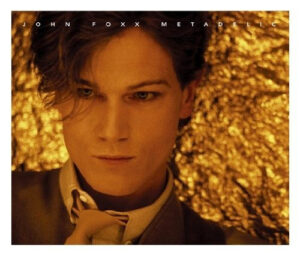 ‘Saturday Live’ was a show that featured interviews and live sessions. Having ventured out touring for the first time since his ULTRAVOX days in support of his third solo album ‘The Golden Section’, John Foxx eschewed material from ‘Metamatic’ but perhaps more surprisingly, mined his former band’s catalogue. Backed by Robin Simon, Peter Oxdendale, David Levy and Barry Watts, Foxx performed an interesting arrangement of ‘Hiroshima Mon Amour’ sans rhythm machine but with guitars, ARP Odyssey and the ubiquitous thud of Simmons drums.
‘Saturday Live’ was a show that featured interviews and live sessions. Having ventured out touring for the first time since his ULTRAVOX days in support of his third solo album ‘The Golden Section’, John Foxx eschewed material from ‘Metamatic’ but perhaps more surprisingly, mined his former band’s catalogue. Backed by Robin Simon, Peter Oxdendale, David Levy and Barry Watts, Foxx performed an interesting arrangement of ‘Hiroshima Mon Amour’ sans rhythm machine but with guitars, ARP Odyssey and the ubiquitous thud of Simmons drums.
Available on the JOHN FOXX album ‘Metadelic’ via Edsel Records
via Edsel Records
http://www.metamatic.com/
HOWARD JONES Don’t Put These Curses On Me (Kid Jensen 1983)
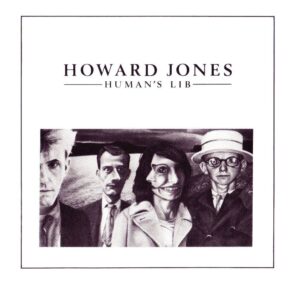 Having triumphed opening for CHINA CRISIS in Spring 1983, Howard Jones impressed with his first BBC session featuring songs like ‘New Song’ and ‘Natural’ which would be included on his debut album ‘Human’s Lib’. The album title track also featured on the session with its original love triangle monologue intro. But ‘Don’t Put These Curses On Me’ would not be released until 2003, thanks to Jones considering the song unlucky following an equipment breakdown while attempting to perform it on the live Channel 4 TV show ‘Loose Talk’.
Having triumphed opening for CHINA CRISIS in Spring 1983, Howard Jones impressed with his first BBC session featuring songs like ‘New Song’ and ‘Natural’ which would be included on his debut album ‘Human’s Lib’. The album title track also featured on the session with its original love triangle monologue intro. But ‘Don’t Put These Curses On Me’ would not be released until 2003, thanks to Jones considering the song unlucky following an equipment breakdown while attempting to perform it on the live Channel 4 TV show ‘Loose Talk’.
Available on the HOWARD JONES boxed set ‘Human’s Lib’ via Cherry Red Records
http://www.howardjones.com/
SIMPLE MINDS The Kick Inside Of Me (Kid Jensen 1983)
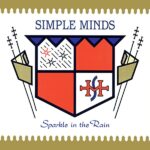 By the end of 1983, SIMPLE MINDS were leaning heavily towards more rockist climes with songs like ‘Waterfront’. But for a three song BBC session which also featured a reprise of ‘New Gold Dream’, there was the debut of ‘The Kick Inside Of Me’, a lively track with catchy synth riffs, an infectious bassline and minimal guitar. But come the released version for the Steve Lillywhite produced ‘Sparkle In The Rain’, it had totally been ruined with distorted guitar, overblown drums and yobbish shouting in a pointless attempt to emulate THE SEX PISTOLS!
By the end of 1983, SIMPLE MINDS were leaning heavily towards more rockist climes with songs like ‘Waterfront’. But for a three song BBC session which also featured a reprise of ‘New Gold Dream’, there was the debut of ‘The Kick Inside Of Me’, a lively track with catchy synth riffs, an infectious bassline and minimal guitar. But come the released version for the Steve Lillywhite produced ‘Sparkle In The Rain’, it had totally been ruined with distorted guitar, overblown drums and yobbish shouting in a pointless attempt to emulate THE SEX PISTOLS!
Available on the SIMPLE MINDS boxed set ‘Sparkle In The Rain’ via Universal Music
via Universal Music
https://www.simpleminds.com/
TALK TALK Why Is It So Hard? (Kid Jensen 1983)
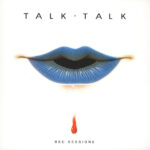 This session captured TALK TALK after the departure of keyboardist Simon Brenner but before producer Tim Friese-Greene came on board as Mark Hollis’ writing partner. Showcasing at the time four brand new songs, only ‘Call In The Night Boy’ ended up on the next album ‘It’s My Life’ while ‘For What It’s Worth’ and ‘Again A Game Again’ became B-sides. But most interesting was ‘Why Is It So Hard?’ which was only released in Canada on the ‘It’s My Mix’ EP as an Extended Version and didn’t get a UK release until 1998 on the ‘Asides Bsides’ collection.
This session captured TALK TALK after the departure of keyboardist Simon Brenner but before producer Tim Friese-Greene came on board as Mark Hollis’ writing partner. Showcasing at the time four brand new songs, only ‘Call In The Night Boy’ ended up on the next album ‘It’s My Life’ while ‘For What It’s Worth’ and ‘Again A Game Again’ became B-sides. But most interesting was ‘Why Is It So Hard?’ which was only released in Canada on the ‘It’s My Mix’ EP as an Extended Version and didn’t get a UK release until 1998 on the ‘Asides Bsides’ collection.
Not officially released
https://www.facebook.com/Talk-Talk-Mark-Hollis-12307963901/
VISAGE Questions (Kid Jensen 1983)
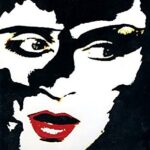 With only Steve Strange and Rusty Egan now remaining, VISAGE surprised all by recording a BBC session with new members Steve Barnacle and Andy Barnett, featuring previously unheard songs ‘Can You Hear Me?’, ‘Only The Good Die Young’, ‘The Promise’ and the funky standout ‘Questions’. With a more live feel, there was hope that VISAGE would be able to sustain some creative momentum despite the departure of Midge Ure, Billy Currie and Dave Formula but the eventual over-produced ‘Beat Boy’ album was rotten, marred by heavy metal guitar and hopelessly off-key singing!
With only Steve Strange and Rusty Egan now remaining, VISAGE surprised all by recording a BBC session with new members Steve Barnacle and Andy Barnett, featuring previously unheard songs ‘Can You Hear Me?’, ‘Only The Good Die Young’, ‘The Promise’ and the funky standout ‘Questions’. With a more live feel, there was hope that VISAGE would be able to sustain some creative momentum despite the departure of Midge Ure, Billy Currie and Dave Formula but the eventual over-produced ‘Beat Boy’ album was rotten, marred by heavy metal guitar and hopelessly off-key singing!
Not officially released
http://www.therealvisage.com/
HARD CORPS Metal + Flesh (John Peel 1984)
 Despite the patronage of Rusty Egan, Daniel Miller and Martin Rushent as well as a tour opening for DEPECHE MODE, the industrial pop of HARD CORPS did not breakthrough and by the time their only album ‘Metal + Flesh’ was released in 1990, all momentum had been lost. But the gothic tension and edgy energy of their music was perhaps best represented by their BBC sessions for John Peel and Richard Skinner, with ‘Metal + Flesh’ from the 1984 Peel session far outstripping the eventual album title track studio incarnation.
Despite the patronage of Rusty Egan, Daniel Miller and Martin Rushent as well as a tour opening for DEPECHE MODE, the industrial pop of HARD CORPS did not breakthrough and by the time their only album ‘Metal + Flesh’ was released in 1990, all momentum had been lost. But the gothic tension and edgy energy of their music was perhaps best represented by their BBC sessions for John Peel and Richard Skinner, with ‘Metal + Flesh’ from the 1984 Peel session far outstripping the eventual album title track studio incarnation.
Available on the HARD CORPS album ‘Radio Sessions’ directly via https://hardcorps.bandcamp.com/album/radio-sessions
https://www.facebook.com/hard-CORPS-217860235015406
BRONSKI BEAT The Potato Fields (John Peel 1984)
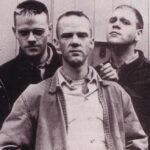 For an Autumn session before the release of their debut album ‘The Age Of Consent’, BRONSKI BEAT took the unusual step of recording three solo tracks, with the only band offering being a take on ‘Why?’ B-side ‘Close To The Edge’. Larry Steinbachek presented a HI-NRG instrumental ‘Ultraclone’ while Jimmy Somerville offered the acapella ‘Puit D’amour’. But Steve Bronski contributed the most unusual track, a beautifully new age piece called ‘The Potato Fields’ which took its lead from the Japanese composer Kitaro, a version of which ended up as a bonus on the ‘I Feel Love’ 12 inch.
For an Autumn session before the release of their debut album ‘The Age Of Consent’, BRONSKI BEAT took the unusual step of recording three solo tracks, with the only band offering being a take on ‘Why?’ B-side ‘Close To The Edge’. Larry Steinbachek presented a HI-NRG instrumental ‘Ultraclone’ while Jimmy Somerville offered the acapella ‘Puit D’amour’. But Steve Bronski contributed the most unusual track, a beautifully new age piece called ‘The Potato Fields’ which took its lead from the Japanese composer Kitaro, a version of which ended up as a bonus on the ‘I Feel Love’ 12 inch.
Not officially available
http://www.bronskibeat.co.uk/
FIAT LUX Breaking The Boundary (Kid Jensen 1984)
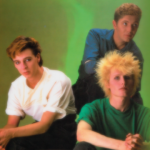 From Spring 1984 to coincide with the release of their new single ‘Blue Emotion’, FIAT LUX stepped into BBC Maida Vale for a session to demonstrate their diversity and musicality as more than just a synth act. As well as ‘Blue Emotion’, there was its Brechtean B-side ‘Sleepless Nightmare’ and an acoustic version of ‘Secrets’. But best of all was ‘Breaking The Boundary’, a glorious burst of uptempo North European melancholy that did not officially see the light of day until the shelved FIAT LUX album ‘Ark Of Embers was finally released by Cherry Red Records in 2019.
From Spring 1984 to coincide with the release of their new single ‘Blue Emotion’, FIAT LUX stepped into BBC Maida Vale for a session to demonstrate their diversity and musicality as more than just a synth act. As well as ‘Blue Emotion’, there was its Brechtean B-side ‘Sleepless Nightmare’ and an acoustic version of ‘Secrets’. But best of all was ‘Breaking The Boundary’, a glorious burst of uptempo North European melancholy that did not officially see the light of day until the shelved FIAT LUX album ‘Ark Of Embers was finally released by Cherry Red Records in 2019.
Not officially available
http://www.fiat-lux.co.uk/
ERASURE Who Needs Love Like That? (Bruno Brookes 1985)
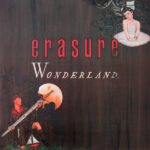 With ERASURE, Vince Clarke had found himself back to square one after YAZOO and THE ASSEMBLY. Recruiting Andy Bell as the flamboyant front man capable of falsetto and creating the vocal tones of Alison Moyet, ‘Who Needs Love Like That?’ did sound like a YAZOO outtake and in this BBC session recording, was busier and more percussive than the already released single version. While ERASURE were not an instant success, the song did eventually chart on its remixed re-release in 1992.
With ERASURE, Vince Clarke had found himself back to square one after YAZOO and THE ASSEMBLY. Recruiting Andy Bell as the flamboyant front man capable of falsetto and creating the vocal tones of Alison Moyet, ‘Who Needs Love Like That?’ did sound like a YAZOO outtake and in this BBC session recording, was busier and more percussive than the already released single version. While ERASURE were not an instant success, the song did eventually chart on its remixed re-release in 1992.
Available on the ERASURE deluxe album ‘Wonderland’ via Mute Records
via Mute Records
https://www.erasureinfo.com/
PET SHOP BOYS A Powerful Friend (John Peel 2002)
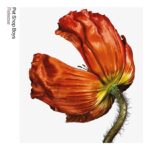 John Peel was not a fan of PET SHOP BOYS or much synthpop for that matter, so it was a surprise when Neil Tennant and Chris Love did a session for him using the back to basics approach that they had adopted for the ‘Release’ tour with guitars, bass and percussion in the line-up. But the bonus for fans was that two of the songs recorded ‘If Looks Could Kill’ and ‘A Powerful Friend’, which had been written in 1983 and shelved, were specially revived for the occasion. Both numbers were particularly energetic with the latter even featuring very loud rock guitars!
John Peel was not a fan of PET SHOP BOYS or much synthpop for that matter, so it was a surprise when Neil Tennant and Chris Love did a session for him using the back to basics approach that they had adopted for the ‘Release’ tour with guitars, bass and percussion in the line-up. But the bonus for fans was that two of the songs recorded ‘If Looks Could Kill’ and ‘A Powerful Friend’, which had been written in 1983 and shelved, were specially revived for the occasion. Both numbers were particularly energetic with the latter even featuring very loud rock guitars!
Available on the PET SHOP BOYS deluxe album ‘Release: Further Listening 2001 – 2004’ via EMI Records
via EMI Records
https://www.petshopboys.co.uk/
Text by Chi Ming Lai
2nd January 2021

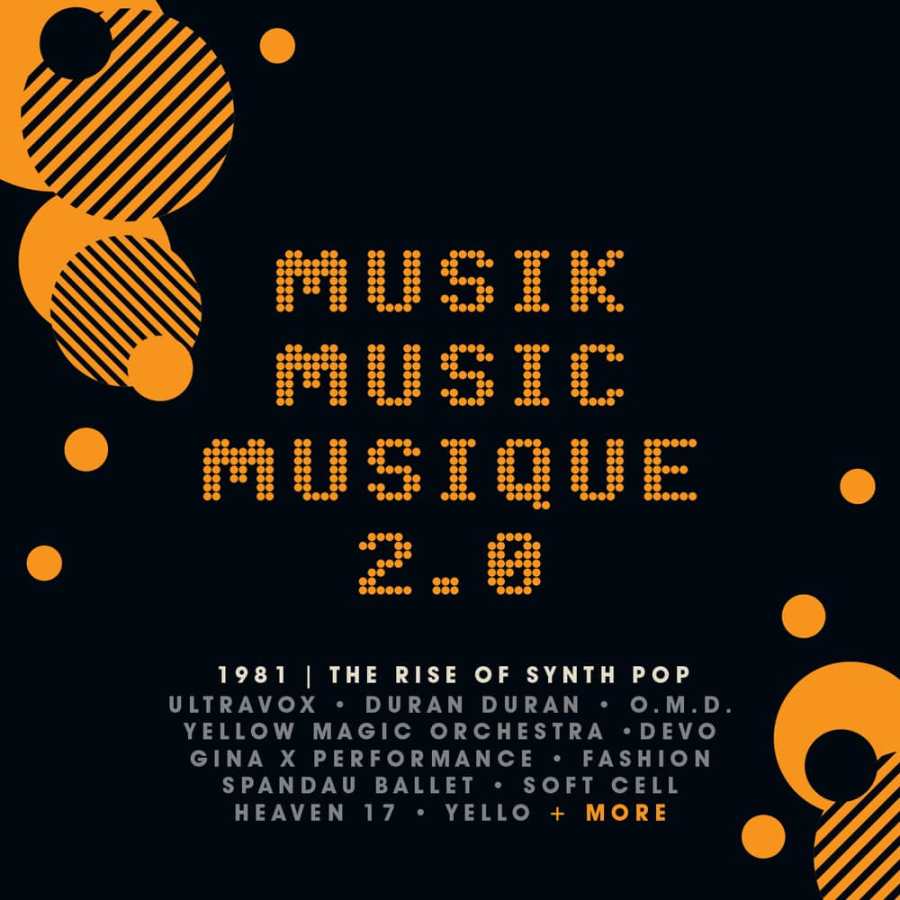


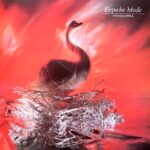
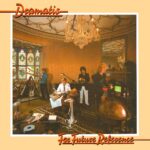

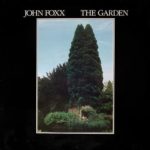
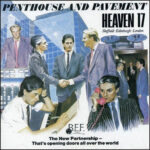
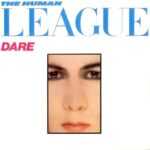
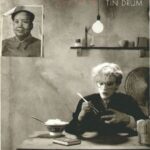
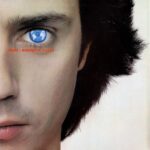
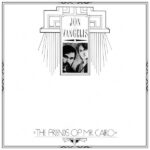
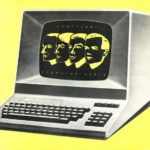
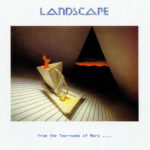
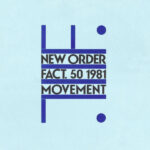
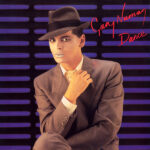
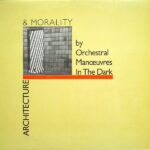
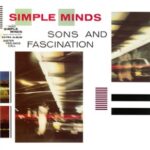
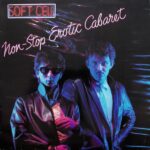
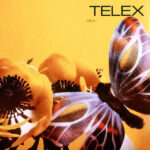
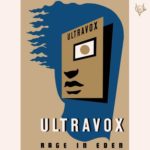
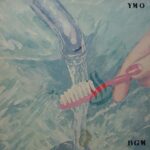


























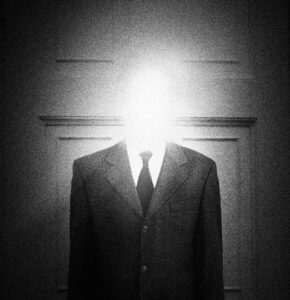
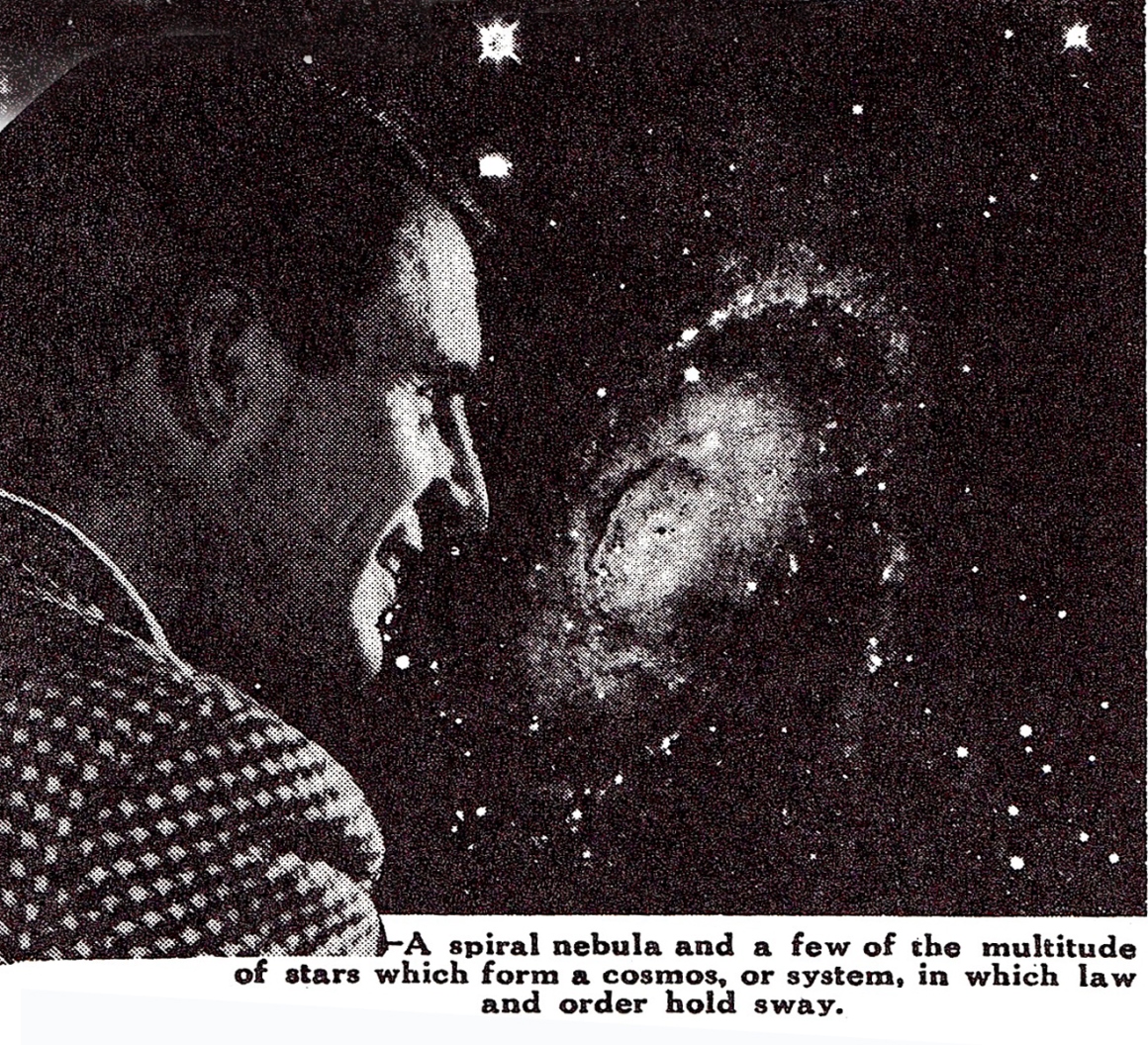
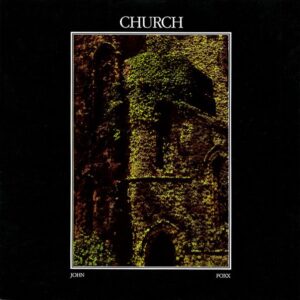
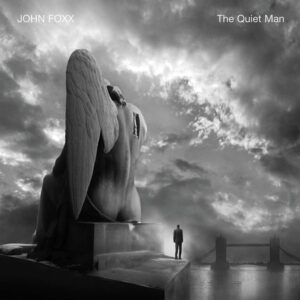
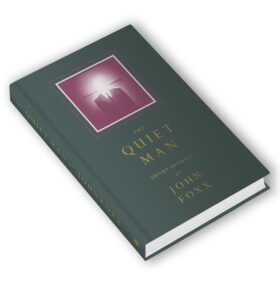
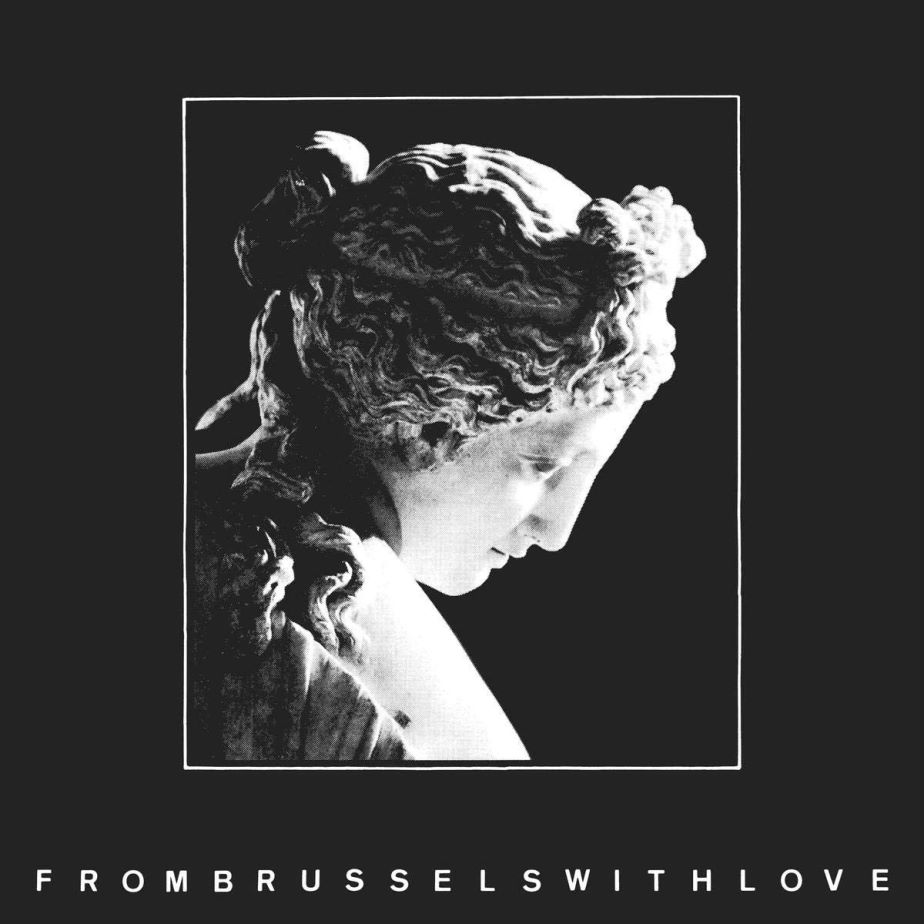
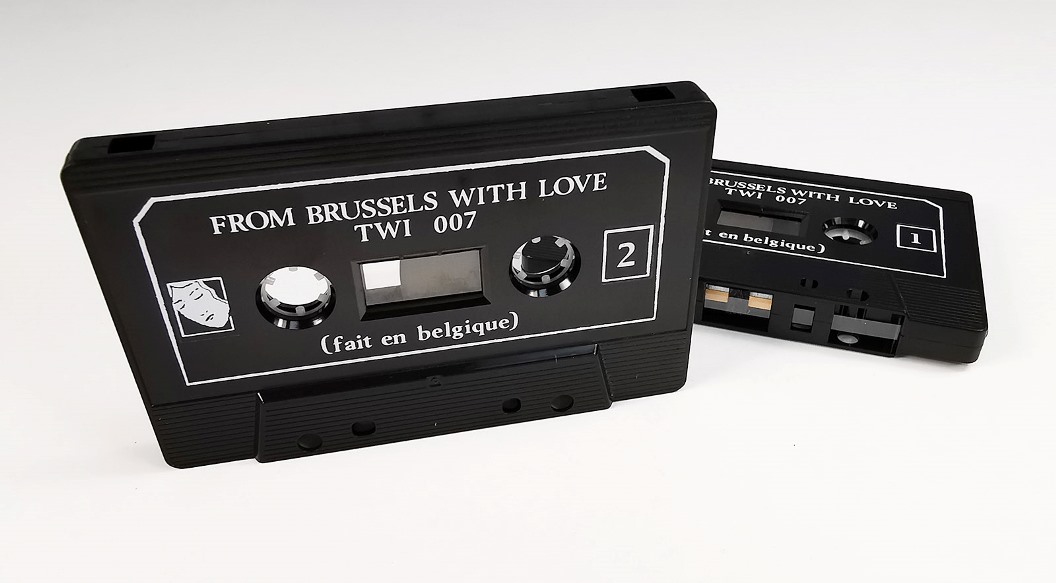
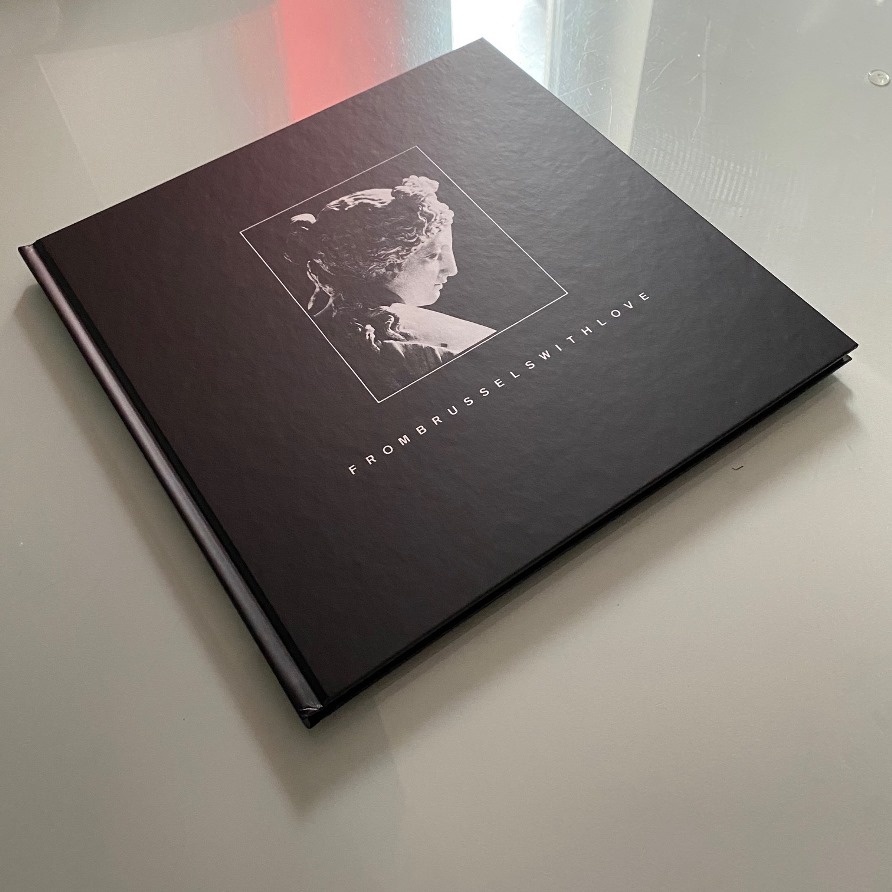
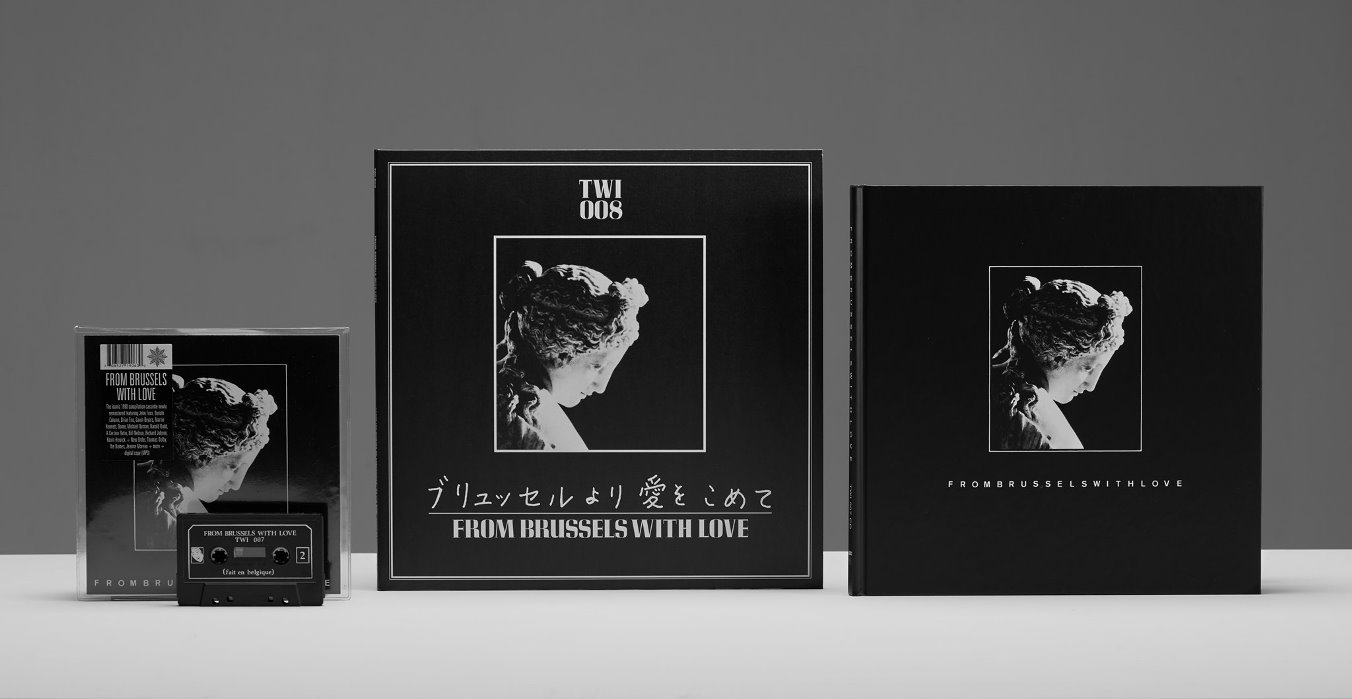
Follow Us!